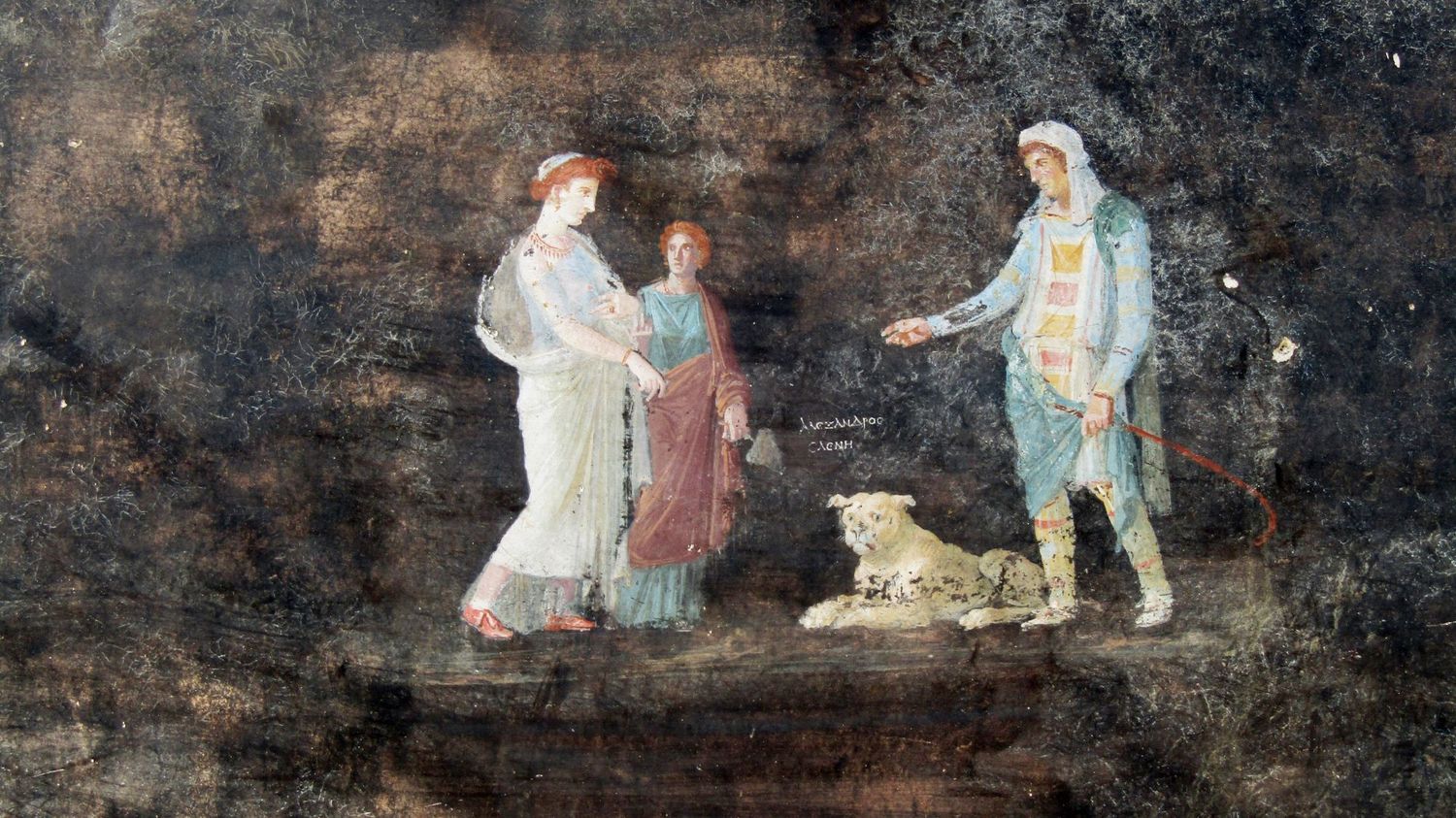This magnificent 15-meter set contains magnificent decorations from mythological stories and testifies to the luxurious lifestyle that reigns in the buried ancient city.
Beautiful frescoes inspired by the Trojan War decorating a banquet hall have been discovered at Pompeii, the famous archaeological site near Naples in southern Italy, it was announced on Thursday (April 11).
This room of impressive dimensions (15 x 6 meters) presents refined decorations of mythological subjects appearing on walls with a black background as well as mosaics, testifying to the luxurious lifestyle prevailing in the ancient city destroyed and buried under ash in the year 79 of the eruption of Vesuvius.
Frescoes with a social function
The dominant theme of the frescoes is heroism through the depiction of pairs of heroes and deities of the protagonists of the Trojan War, but these images also evoke fate and the ways in which humans can modify it.
Among the characters represented are Helen and Paris, a Trojan prince who kidnapped the latter, the wife of the Spartan king Menelaus, sparking the Trojan War. We also discover Cassandra, the sister of Paris, and the god Apollo, from whom she is given the gift of telling the future, although her predictions are never believed, including by her family. In vain she warned her countrymen that the horse offered by the Greeks was a ruse that would lead to Troy’s downfall. “The frequent presence of mythological figures on the frescoes in the reception rooms of Roman houses had precisely the social function of entertaining guests and guests by providing topics for conversation and reflection on the meaning of existence”. he explained the direction of Pompeii.
Pompeii: Land of Surprises
A practical and fascinating detail: the walls were painted black so that no traces of smoke from the lanterns could be seen. In this piece, “we gathered for banquets after sunset, the flickering light of the lanterns gave the impression that the painted pictures came to life, especially after a few glasses of good wine”, remarked poetically the director of Pompeii, the Italian-German Gabriel Zuchtriegel.
Pompeii “It never ceases to surprise us because every time we dig we find something beautiful and meaningful” Culture Minister Gennaro Sangiuliano rejoiced. Volcanic ash ejected 2,000 years ago by Vesuvius settled on most of the houses in Pompeii, allowing them to be almost completely preserved, as well as many of the bodies of the 3,000 dead caused by the disaster. A UNESCO World Heritage Site, the second most visited tourist site in Italy after the Colosseum in Rome, Pompeii covers a total area of approximately 22 hectares, a third of which is still buried in ash.

